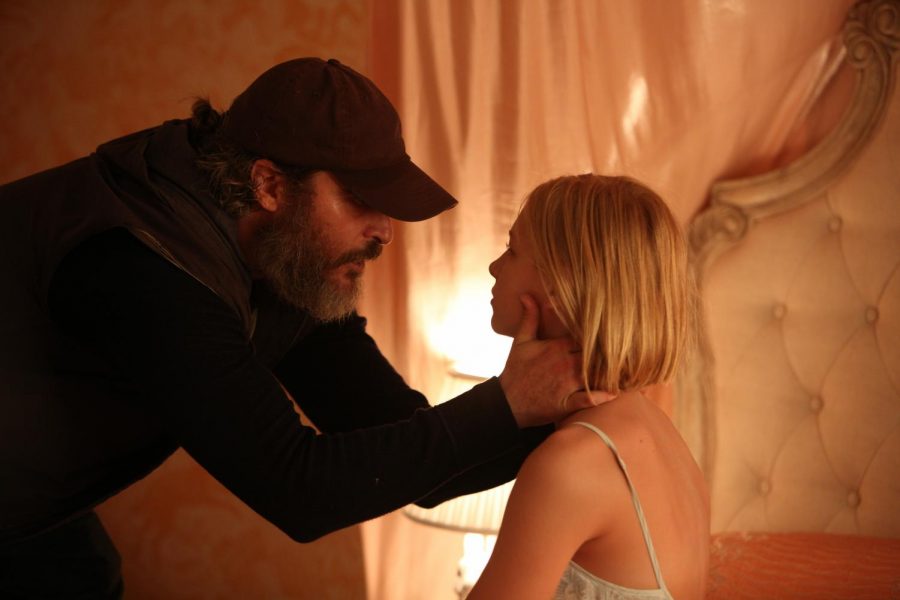‘You Were Never Really Here’ crumbles into a classic
April 16, 2018
Have you ever wondered what would happen if Andrei Tarkovsky directed “Taxi Driver?“ The film must combine the brutality and nihilism of Scorsese’s masterpiece with the philosophical dreaminess of a Tarkovskian film to create an uninhibited and original vision for the new millennium. It needs to be anchored by a visceral, emotional performance that makes the audience not only care about the character, but also about the actor. One would also need an uncompromising director with a vision so clear that no producer could tamper with it. This might sound like a pipe dream, but Lynne Ramsay’s film “You Were Never Really Here” molds this dream, or more aptly, this nightmare, into a reality.
“You Were Never Really Here” isn’t worried about what you think of it. Its thin revenge plot concerns a suicidal hitman named Joe, played by Joaquin Phoenix, who stumbles across a low–level government conspiracy as he attempts to rescue a teenage runaway.
This so-called plot disappears as Joe stumbles through life in perpetual agony, looking for a way out. The character’s don’t change and the climax of the film—if you can call it that—happens off screen. In short, it’s a film that shouldn’t have been written, produced or released. And for those reasons, it is beautiful.
Ramsay directed and wrote this film, the first feature since her 2011 release “We Need to Talk About Kevin.” The plot of “You Were Never Really Here” is a story without a plot, featuring a character without motivation in a world that doesn’t care. What matters to Ramsay is not the story, but the characters. In most films, there is the plot, or what we see, and an overarching story. To Ramsay, there is no difference. What Joe experiences is all we experience.
This film is violent. It’s painful. It makes you squirm as you watch Joe, already battered in the beginning, succumb to pain. It is not movie violence. It is unchoreographed and awkward and strikes fear into a viewer because, unlike most Hollywood violence, this seems real.
Joe beats men with a ball point hammer and walks over their corpses as if they had rested there when he arrived. He pulls out half a tooth in a back alley and tries to shower as vicious scars align on his back like a tattered road map to his agony.
These scenes aren’t meant to symbolize some higher goal, but that violence only needs to represent violence and how dreadfully corrosive it can be.
The film is elevated because despite Joe’s suffering, he attempts to do the right thing. He attempts to save the innocent and do other good deeds in the massacre of Ramsay’s world.
The film asks: Who is really innocent, and what is really worth saving? The question drifts in and out as Joe drags himself along this dreamlike mist of pain. However, by the end, viewers know the answer, even if they don’t want to.








